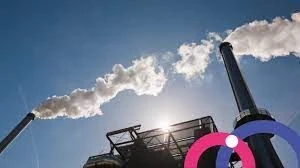In a world grappling with escalating waste and the urgent need for sustainable energy sources, Waste to Energy (WtE) emerges as a beacon of hope.
This blog post delves into the environmental benefits of WtE, shedding light on how this innovative solution addresses modern challenges with a distinctly green approach.
Check - Key Considerations for Implementing Waste to Energy Projects
The Waste Dilemma:
As urbanization accelerates, so does the volume of waste generated. Traditional waste management methods, often reliant on landfills, contribute to environmental degradation and resource depletion. WtE, however, redefines this narrative, presenting an eco-friendly alternative.
Reduced Landfill Dependency:
One of the primary environmental advantages of WtE is its capacity to significantly reduce reliance on landfills. By diverting waste from these expansive, often polluting sites, WtE curtails the negative environmental impact associated with landfill usage.
Mitigation of Greenhouse Gas Emissions:
Landfills are notorious for emitting methane, a potent greenhouse gas. WtE plants, through controlled incineration, not only minimize methane emissions but also produce energy. This dual benefit creates a positive environmental ripple effect by mitigating climate change and contributing to sustainable energy production.
Energy Recovery and Sustainable Resource Utilization:
WtE plants harness the energy potential inherent in waste materials. By efficiently converting waste into electricity or heat, these facilities contribute to the diversification of energy sources and reduce the reliance on non-renewable options. The process also aids in the sustainable utilization of resources, aligning with the principles of a circular economy.
Conservation of Natural Resources:
Beyond energy production, WtE plays a vital role in conserving natural resources. Materials such as metals and glass can be recovered from the combustion process, diverting them from the depletion of finite resources and facilitating recycling.
Improved Air Quality and Pollution Control:
Modern WtE technologies incorporate advanced emission control systems. These systems mitigate the release of pollutants into the atmosphere, ensuring that the incineration process is conducted with minimal impact on air quality. Stringent environmental standards further underscore the commitment to reducing pollution.
Community Health and Safety:
By reducing the reliance on landfills and curbing harmful emissions, WtE contributes to enhanced community health and safety. The potential hazards associated with traditional waste disposal methods are diminished, creating a cleaner and safer living environment for nearby residents.
Conclusion:
As we navigate the environmental challenges of the 21st century, Waste to Energy stands as a green solution with multifaceted benefits. From reducing landfill dependency to mitigating greenhouse gas emissions and conserving natural resources, WtE exemplifies a sustainable approach to waste management. Embracing the environmental benefits of WtE is not merely a step forward; it's a leap towards a cleaner, greener, and more sustainable future.


